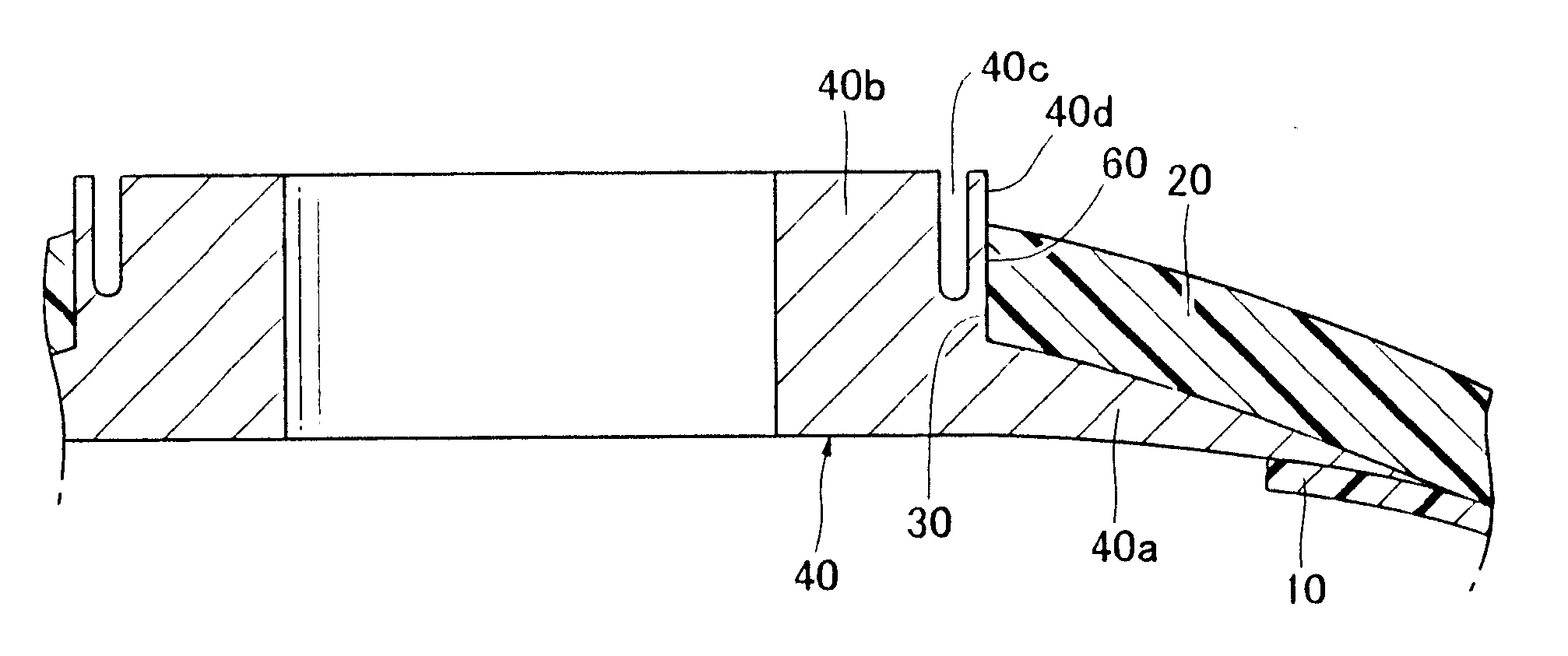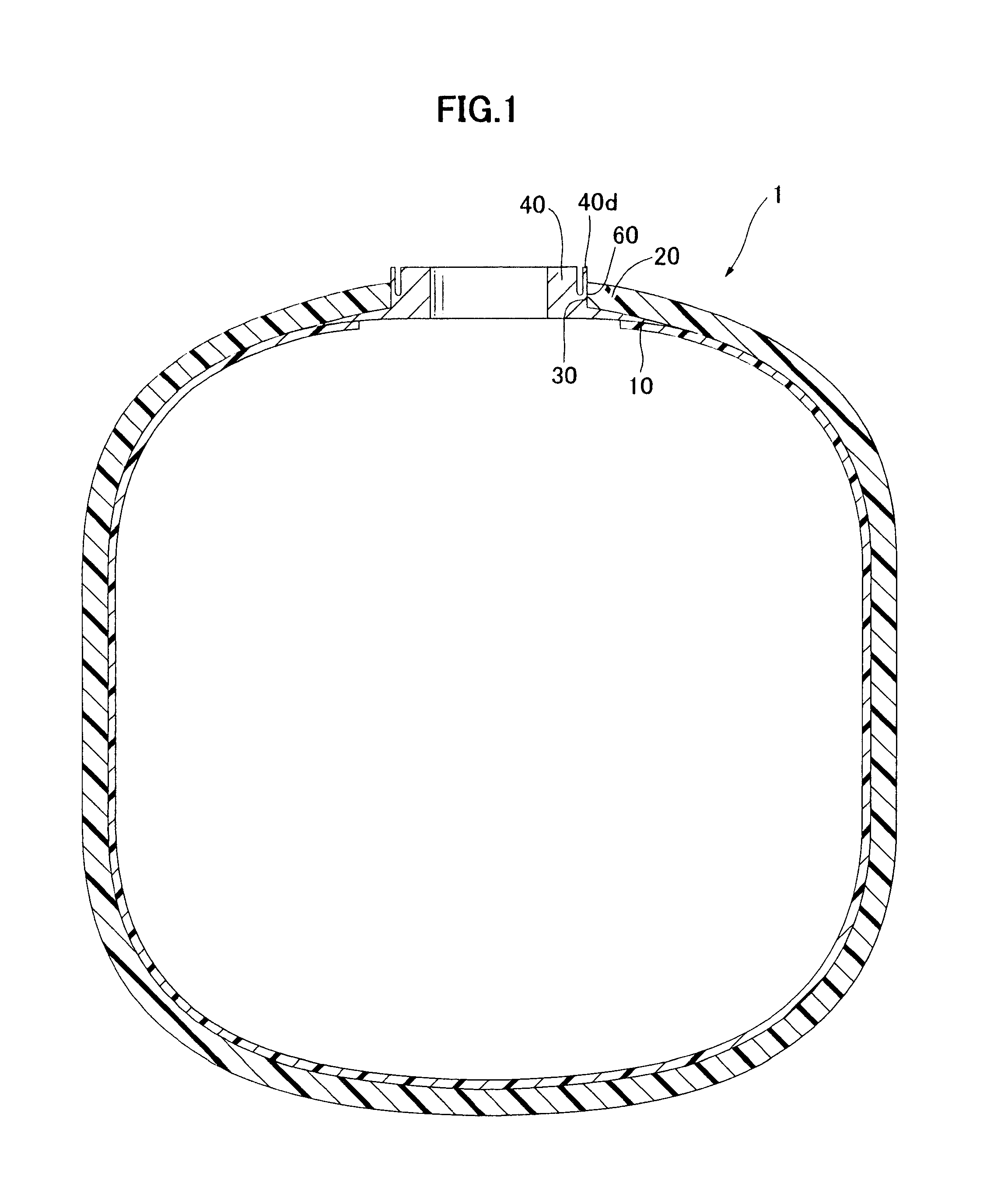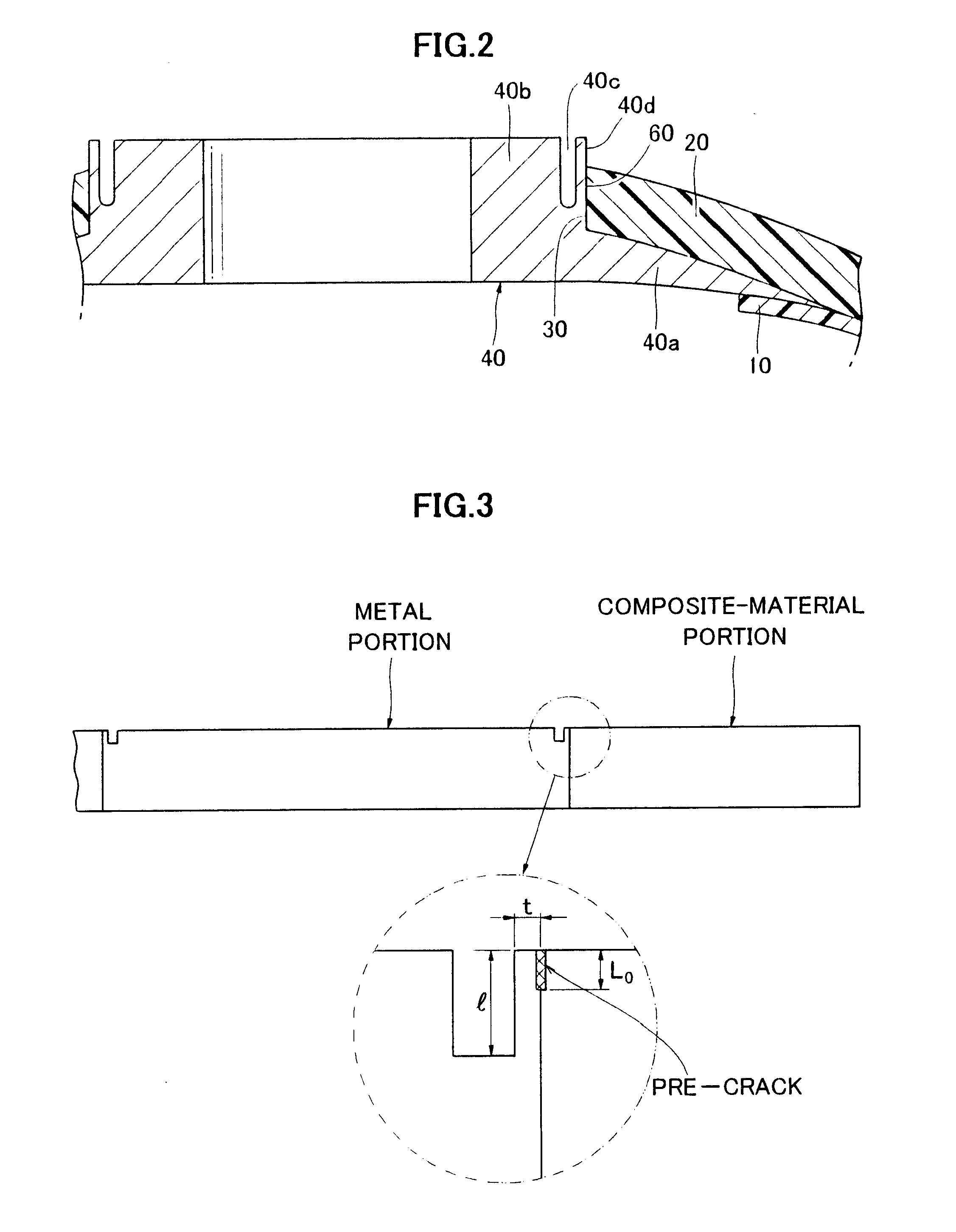Bonding structure of metal member and composite-material member
a technology of composite materials and metal parts, applied in the direction of non-disconnectible pipe joints, rigid containers, vessel geometry/arrangement/size, etc., can solve the problems of tank not being entirely made of composite materials, affecting the bonding performance of metal parts, and affecting the bonding performance of composite materials, etc., to achieve the effect of reducing the energy release rate of the adhesive bonding surface, preventing debonding, and reducing the stiffness
- Summary
- Abstract
- Description
- Claims
- Application Information
AI Technical Summary
Benefits of technology
Problems solved by technology
Method used
Image
Examples
first embodiment
[0055]FIG. 1 is a sectional view of a tank 1 according to a first embodiment of the present invention, and FIG. 2 is a sectional view of a mouthpiece region of the tank 1. As illustrated in FIG. 1, the tank 1 comprises an inner shell 10, an outer shell 20 covering the inner shell 10, and a mouthpiece 40 connected to the outer shell 20 through an opening 30 provided in the outer shell 20. In FIG. 1, the opening 30 is provided in a top portion of the tank 1. Additionally, another opening30 and another mouthpiece 40 may be provided in a bottom portion of the tank 1.
[0056]The inner shell 10 is formed of a liner made of resin having a high gas barrier capability, such as liquid-crystal polymer and adapted to prevent leakage of an internal fluid.
[0057]The mouthpiece 40 is made of metal, such as titanium, and formed in a cylindrical shape. The mouthpiece 40 has a flange portion 40a formed at an end thereof on an inner side of the tank, and a tubular portion 40b standing upwardly from the f...
second embodiment
[0076]FIGS. 7 and 8 are sectional views of a mouthpiece region of a tank 1 according to a second embodiment of the present invention. In the second embodiment, any configuration other than a mouthpiece 40 is the same as that in FIG. 1. In FIGS. 7 and 8, an element or component corresponding to that in FIGS. 1 and 2 is assigned with the same reference numeral or code, and the description of an element or component equivalent to that in the first embodiment will be omitted.
[0077]The second embodiment is intended to, when it is difficult to fabricate a slit 40c from an end of a tubular portion 40b of the mouthpiece 40 on an outer side of the tank due to a shape of the mouthpiece 40, fabricate the slit 40c from an outer peripheral surface of the tubular portion 40b to obtain the same effects as those in the first embodiment. For example, as illustrated in FIG. 7, a slit 40c is formed obliquely with respect to the outer peripheral surface of the tubular portion 40b, or an adhesive bondin...
third embodiment
[0082]FIG. 9 is a sectional view of a satellite body 101 according to a third embodiment of the present invention. As illustrated in FIG. 9, a cylindrical-shaped CFRP thrust tube 120 is disposed in the middle of an internal space of the satellite body 101, and a circular-shaped top panel 102 and a circular-shaped bottom panel 104 are attached, respectively, to a top and a bottom of the thrust tube 120 by metal brackets 140. Further, a cylindrical-shaped exterior panel 106 is attached to the top panel 102 and the bottom panel 104 to define an outer surface of the satellite body 101. In this structure, the thrust tube 120 supports the entire load of a satellite.
[0083]FIG. 10 is a sectional view of a joining region between the thrust tube 120 and the upper panel 102 which is an enlarged view of the section A in FIG. 9. As illustrated in FIG. 10, the thrust tube 120 and a vertical piece of the metal bracket 140 are adhesively bonded together through an adhesive bonding surface 160, and ...
PUM
| Property | Measurement | Unit |
|---|---|---|
| diameter | aaaaa | aaaaa |
| length | aaaaa | aaaaa |
| operating pressure | aaaaa | aaaaa |
Abstract
Description
Claims
Application Information
 Login to View More
Login to View More - R&D
- Intellectual Property
- Life Sciences
- Materials
- Tech Scout
- Unparalleled Data Quality
- Higher Quality Content
- 60% Fewer Hallucinations
Browse by: Latest US Patents, China's latest patents, Technical Efficacy Thesaurus, Application Domain, Technology Topic, Popular Technical Reports.
© 2025 PatSnap. All rights reserved.Legal|Privacy policy|Modern Slavery Act Transparency Statement|Sitemap|About US| Contact US: help@patsnap.com



